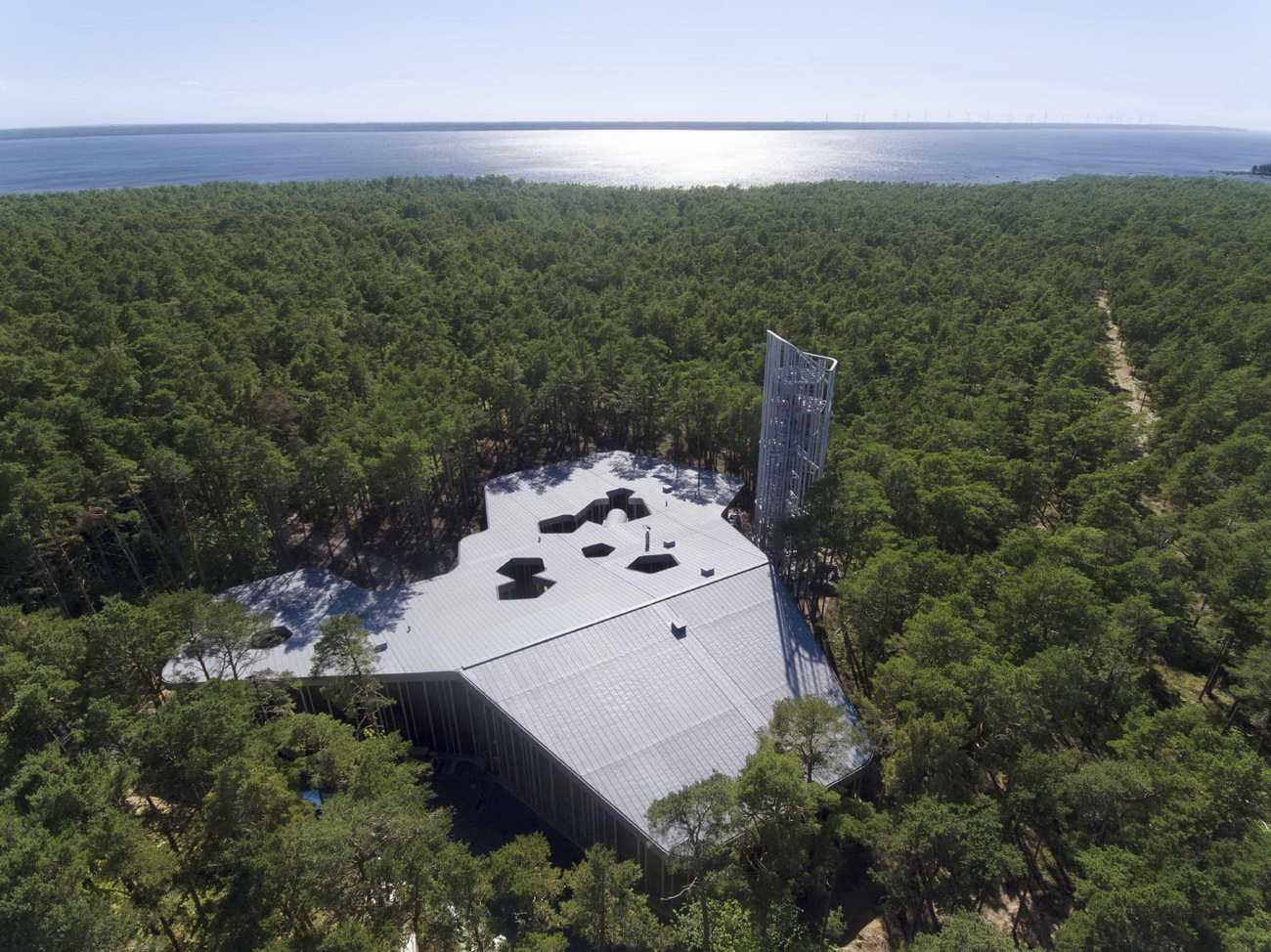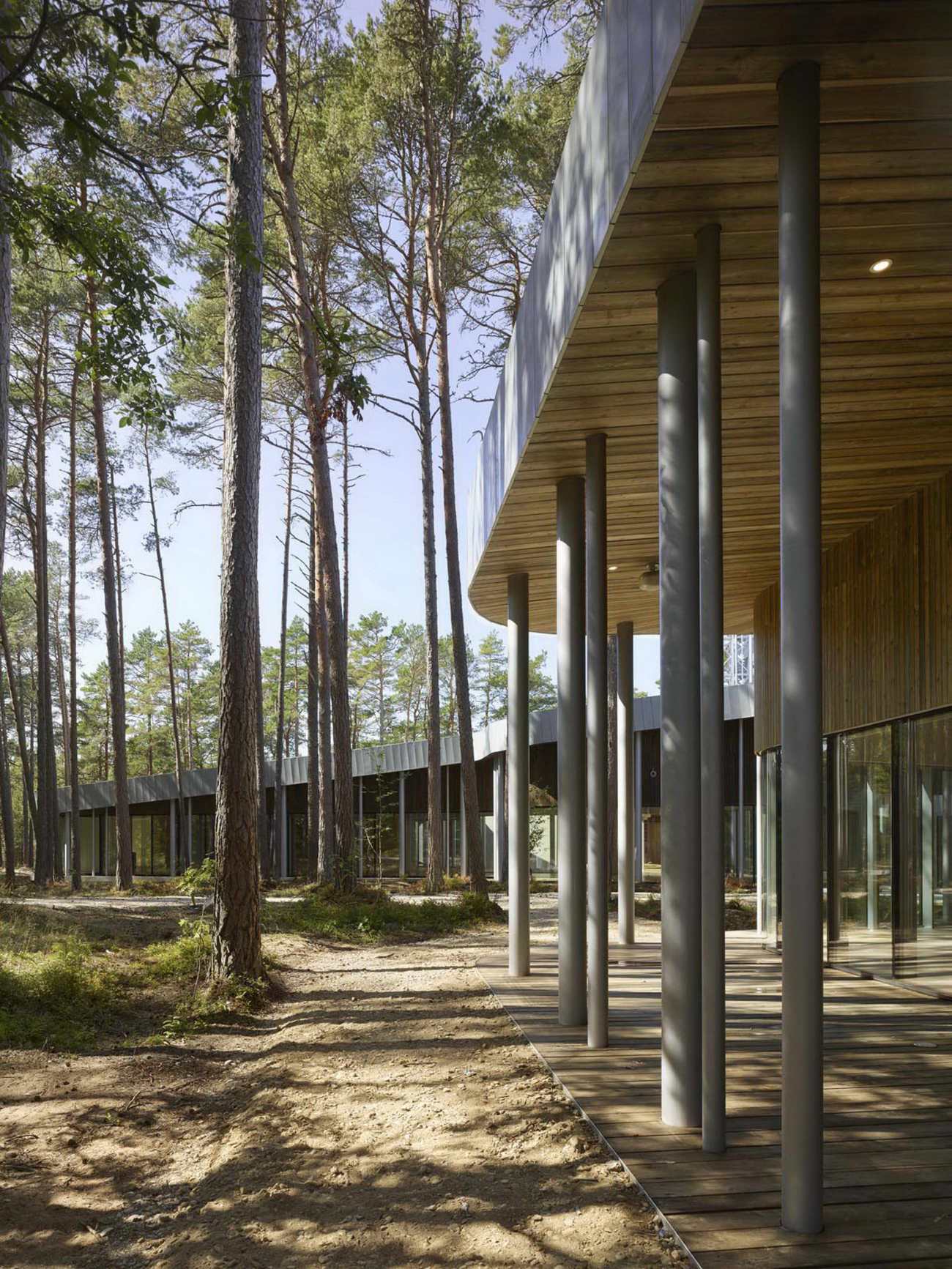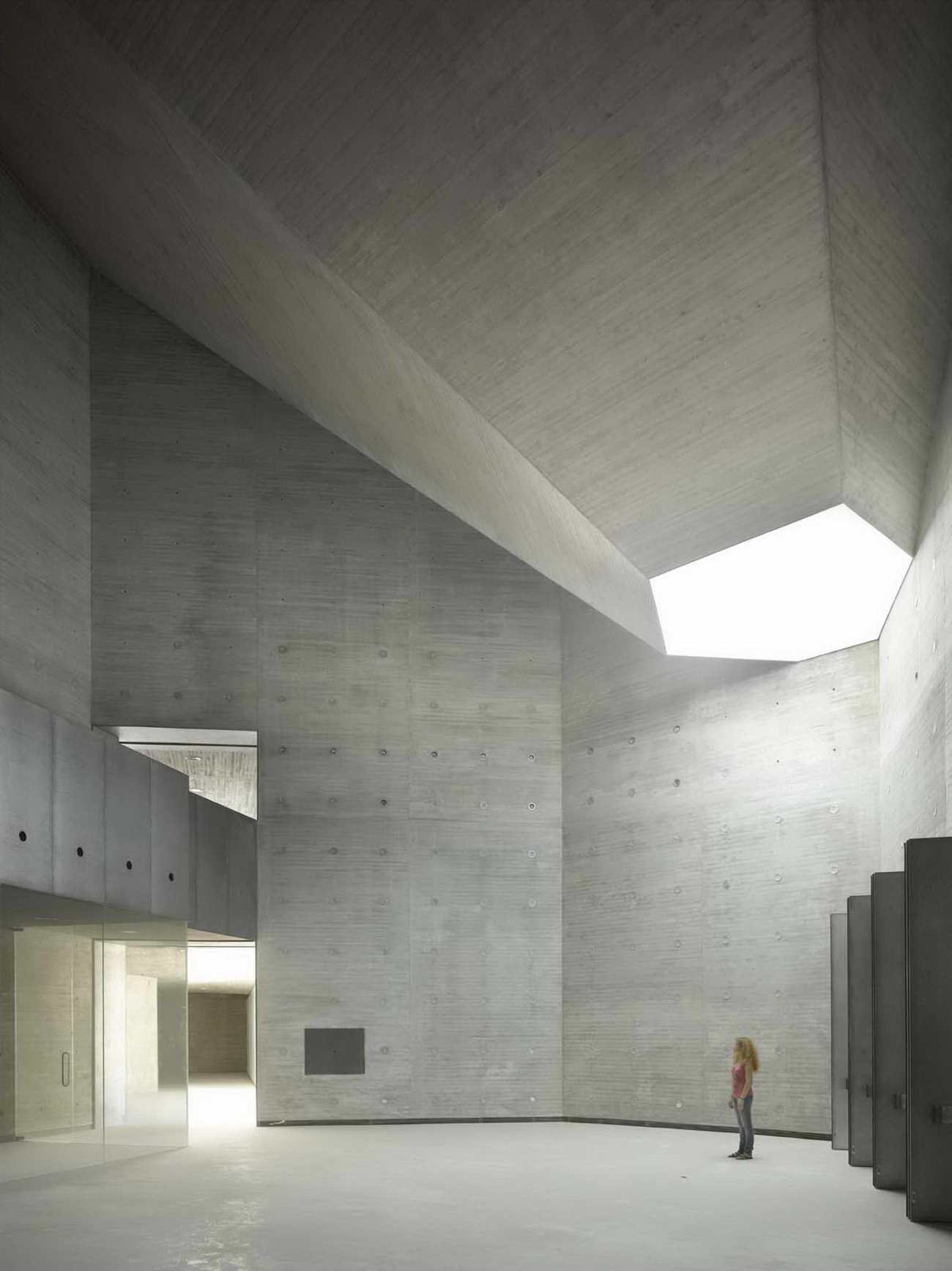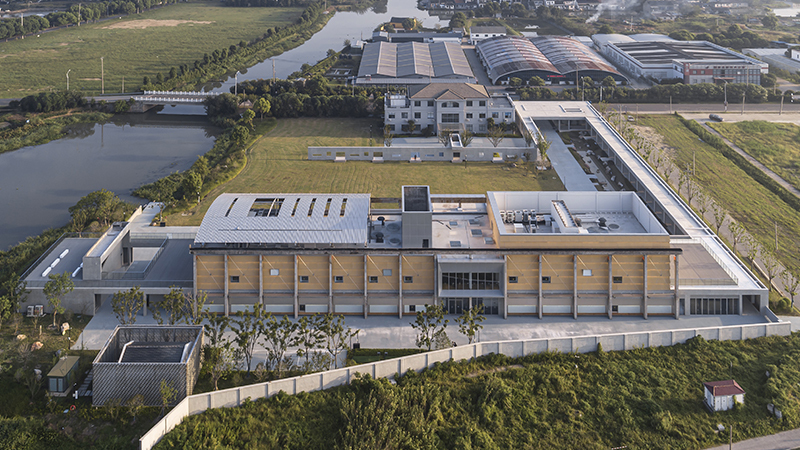| 公司: | Nieto Sobejano Arquitectos | 类型: | 建筑 |
|---|---|---|---|
| 地区: | 爱沙尼亚 | 标签: | 文化空间 |
时间通常被认为是音乐创作的原则,就像建筑被定义为创造空间的艺术一样。然而,对建筑作品的感知也同样存在于其时间维度上,而声音则是其表演地点的空间条件的结果。这种将音乐和建筑--时间和地点--联系在一起的二分法,正是我们设计的项目的起源,该项目旨在寻找爱沙尼亚艺术家的作品与宁静的风景之间的平衡。
Time is usually considered the principle that structures musical composition, in the same way that architecture is defined as the art of creating space. However, it is no less true that the perception of an architectural work also resides in its temporal dimension while the sound is a consequence of the spatial conditions of the place in which it is performed. This dichotomy that links music and architecture - time and place - is at the origin of our project forthe Arvo Pärt Centre searching a balance between the intimacy of the Estonian artist’s compositions and the serene beauty of the landscape.
两种不同寻常的建筑元素被插入到建筑中。作为音乐作品的重音,它们呈现出一种奇怪的感觉,将项目与Arvo Pärt的个性深深地联系在一起。一个极简的小教堂,被设想为一个小型东正教寺庙的抽象,位于其中一个天井中,仿佛是在这个地方发现的。另一方面,一个细长而轻盈的金属螺旋塔耸立在松树之上,从顶部可以看到波罗的海的景色。混凝土教堂被固定在它所属的地形上,而金属塔则向天空升起,这种对立使我们看到了建筑行动中固有的两种最初的冲动:与地面亲密融合的意愿和达到不可能的失重的愿望。
Two unusual architectural elements are inserted into the building. As accents of a musical composition, they assume a strangeness that deeply links the project with the personality of Arvo Pärt. A minimal chapel, conceived as an abstraction of a small Orthodox temple, is located in one of the patios, as if it had been found in the place. On the other hand, a slender and light metallic helical tower rises above the pine trees to allow from the top views towards the Baltic Sea. The concrete chapel is anchored in the terrain to which it belongs, while the metal tower rises towards the sky, an opposition that leads us to two initial impulses inherent in the action of building: the will to merge intimately with the ground opposed to the aspiration to reach an impossible weightlessness.
项目的耐心时间和建筑的建造也涉及到我们自己对Arvo Pärt作品的诠释过程。就像在音乐的即兴创作中,意想不到的发现帮助我们发现隐藏的联系。随机将我们的建筑表现与 "Tabula Rasa "乐谱的原始符号叠加,出现了令人惊讶的干扰:平行文本的碎片、五角星、地形部分、共同的几何图形、可互换的节奏,这些建议成为连接声音、时间和地点的深刻联系的隐喻。
The patient time of the project and construction of the building also involves the process of our own interpretation of Arvo Pärt’s work. As in a musical improvisation, unexpected findings help us uncover hidden connections. Randomly superimposing our architectural representations with the original notations for the “Tabula Rasa” score, surprising interferences arise: fragments of parallel texts, pentagrams, terrain sections, common geometries, interchangeable rhythms, suggestions that become a metaphor for the profound connections that link sound, time, and place.
Project: ARVO PÄRT CENTRE
Design firm: Nieto Sobejano Arquitectos
Location: Laulasmaa, Estonia
Client: Arvo Pärt Centre Foundation
Architects: Nieto Sobejano Arquitectos Fuensanta Nieto, Enrique Sobejano Luhse &Tuhal (local architects)
Program: Multipurpose centre
Total floor area: 2.850 m2
Competition team: Alfredo Baladrón, Víctor Esquivel, Victor Mascato, Juan Carlos Redondo, Paolo Russo, Evelina Vasiliauskaite
Project architect: Alexandra Sobral
Project team: Simone Lorenzon, Covadonga Blasco, Pablo Gómez, Víctor Mascato, Michele Versaci, Adrián Rodríguez, Alejandro Klimowitz, Vanesa Manrique, Natalia Bello
Structural engineer: PIKE OÜ
Mechanical engineer: HEVAC OÜ
Lighting consultant: Ignacio Valero
Acoustic consultant: Arau Acústica
Models: Nieto Sobejano Arquitectos, METRICAminima SLL
Competition: 2014
Design: 2014-15
Construction: 2017-18
Construction company AS Ehitustrust
Photographs: Roland Halbe
更新日期:2021-01-27 16:39:02
非常感谢 Nieto Sobejano Arquitectos 带来的精彩项目, 查阅更多Appreciations towards Nieto Sobejano Arquitectos for sharing wonderful work on hhlloo. Click to see more works!














